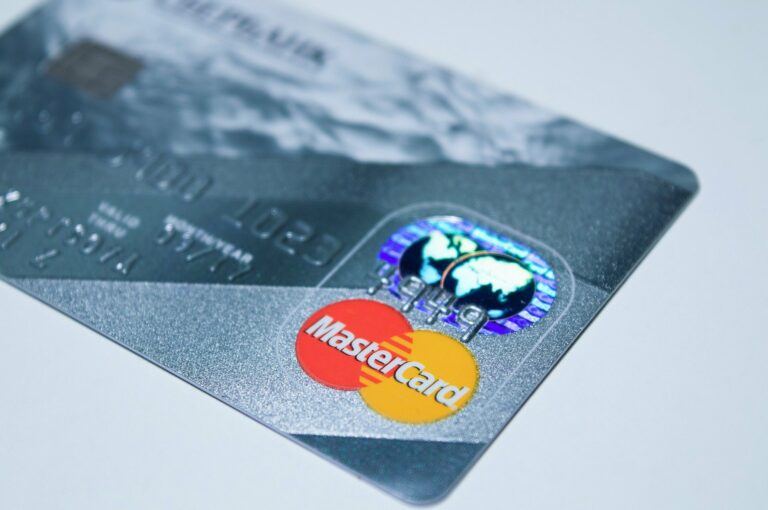On Thursday (June 9), Mastercard, a leader in global payments, announced that it has partnered with several crypto startups to “enable NFT commerce.”
According to a blog post published yesterday by Raj Dhamodharan, Executive Vice President of Blockchain / Digital Asset Products and Digital Partnerships at Mastercard, his firm is collaborating with “Immutable X, Candy Digital, The Sandbox, Mintable, Spring, Nifty Gateway, and Web3 infrastructure provider MoonPay” to “allow people to use their Mastercard cards for NFTs purchases, whether that’s on one of these companies’ marketplaces or using their crypto services.”
The blog post went on to say that “a new Mastercard survey of more than 35,000 people in 40 countries found that 45% had purchased an NFT or would consider doing so, and roughly half sought more flexibility — being able to pay with crypto for everyday purchases or using a credit or debit card to buy an NFT.” It also mentioned that they are using their “full suite of capabilities to reinforce customer safety, giving people similar protections to the ones they enjoy when making transactions in a store or online with a Mastercard card.”
In April, Dhamodharan explained why his firm does not see blockchain technology and cryptocurrency as threats to his firm’s principal business.
Dhamodharan, who has been working at Mastercard for nearly 12 years (and before that he worked for around seven and half years at Visa), shared his thoughts on blockchain technology and crypto during an interview with Protocol that was published on April 20.
As Protocol reminded us, on 29 December 2021, Chamath Palihapitiya the Sri Lankan-born Canadian and American venture capitalist who is the founder and CEO of Social Capital, told Jason Calacanis on episode #61 of the All-In Podcast that Mastercard and Visa would be 2022’s biggest business losers, calling them a “completely contrived duopoly that doesn’t need to exist.”
Alex Johnson, author of the Fintech Takes newsletter, told Protocol:
“Visa and Mastercard didn’t get to where they are today by taking competitive threats to their hegemony — no matter how theoretical — lightly.“
In the past couple of years, Mastercard has certainly has not been ignoring blockchain technology and crypto. Here are the titles of a few relevant press release from the company’s Newsroom:
- 9 December 2021: “New digital assets and cryptocurrency startups join Mastercard Start Path program to jump start new opportunities and solve real-world problems“
- 25 October 2021: “Mastercard and Bakkt partner to offer innovative crypto and loyalty solutions“
- 9 September 2021: “Mastercard acquires CipherTrace to enhance crypto capabilities“
- 27 April 2021: “Gemini partners with Mastercard to launch new crypto rewards credit card this summer“
- 13 April 2021: “Partnership with ConsenSys supports the future of multi-blockchain commerce“
- 17 February 2021: “Mastercard and Island Pay launch world’s first central bank digital currency-linked card“
Anyway, going back to Dhamodharan’s April 2022 interview with Protocol, he started by telling them about his current role:
“In the last couple of years, I’ve led this group that focuses on crypto, talking about how our current network can actually facilitate crypto for millions and billions of consumers to experience safely…
“Crypto is actually a package of multiple technologies. Crypto as an investment asset is probably the most mature one. Our job is really looking at a range of technologies and value propositions available in crypto, to make sure that can be experienced in a safe and secure way.”
With regard to claims by some people in the crypto community that blockchain would eventually eat Mastercard’s and Visa’s lunch, Dhamodharan told Protocol:
“We don’t think about it that way at all. I go back to the maturity cycles of various technologies in crypto. Potentially, the most mature one is crypto as an investment asset class. NFTs is the next one. And there are a few other technologies like on the identity side and the DeFi side coming up in different levels of maturity and cycles.
“What we’re always looking for, for our customer base and partners, is providing choice in a safe and simple manner. Safety and simplicity is everything. We have run multiple networks today. Moving value and providing consumers and merchants different ways of moving value is not new to us. We are always looking for that.
“When it became clear that we can provide a safe way to open up our network to provide a mechanism for people to buy cards using cards they have today for bitcoin or ether because they want to buy that as an investment, we opened it up.
“That is one of the growing flows on our network at the moment, buying crypto using our cards via crypto-to-fiat conversion. Now once they bought it, they wanted a way to access those holdings in a safe and secure manner… There are four different types of crypto cards that we have in the market today.
“The first one is a card that connects directly to your crypto holdings. We don’t move the crypto. It’s the issuer of the card that provides the fiat necessary and settles with us.
“The type-two card is that a consumer is asked explicitly to sell their assets and get to fiat. Then you have U.S. dollar holdings that you spend just like you would spend a prepaid card or something like that.
“The third type is the Gemini card which is, ‘I have crypto, but I want to use it as investment holdings and I’m not necessarily interested in spending it. I’m interested in earning more crypto.’ Gemini said they have 500,000 people waiting to get that card. They’re working through that pipeline. I myself am on the waiting list. I don’t want to jump the line. I’ll wait with other consumers. It’s a popular card because people earn crypto and then it sits in your Gemini wallet whether you want bitcoin or ether.“
Image Credit
Featured Image by “AKuptsova” via Pixabay.com









